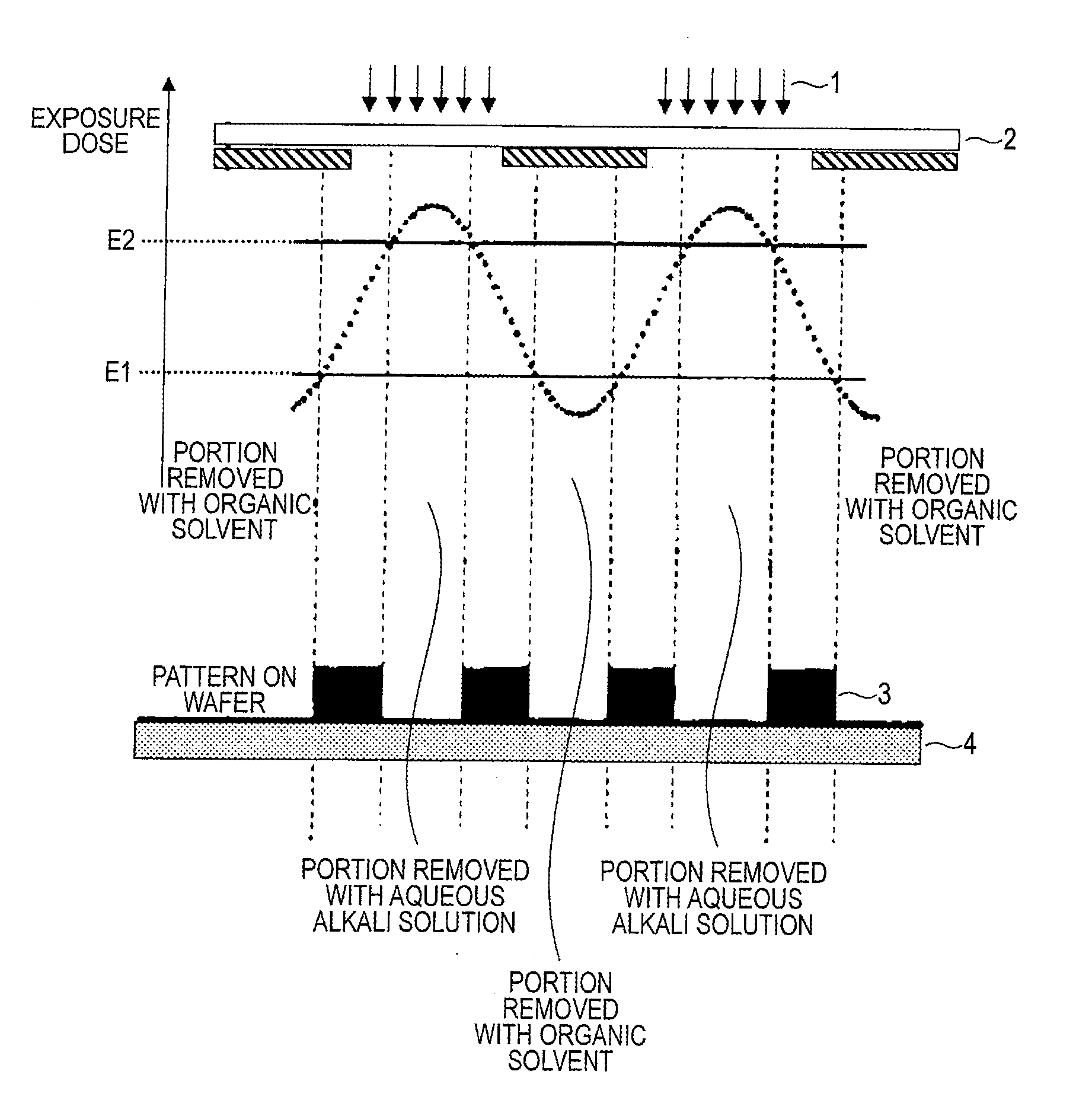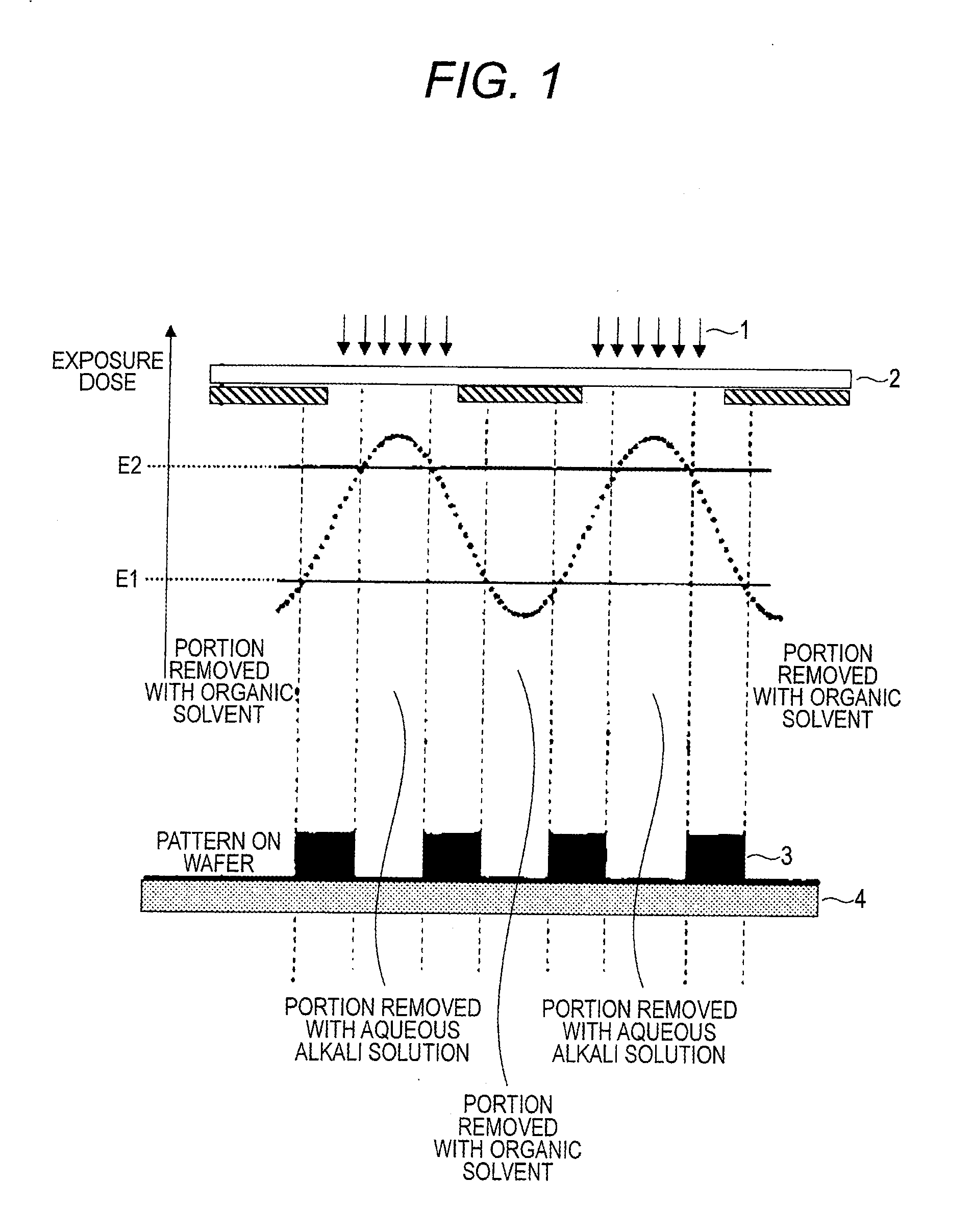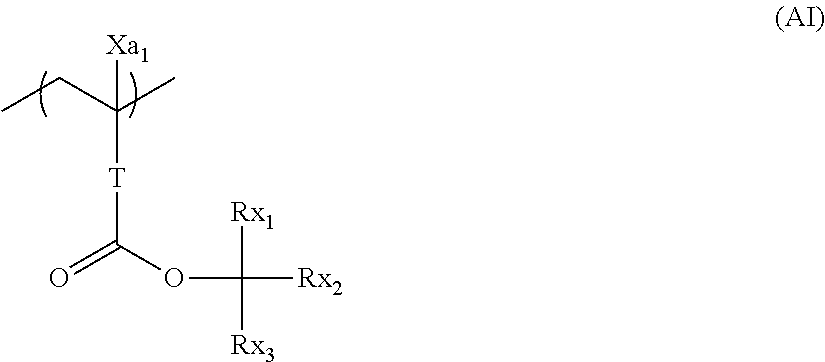Pattern forming method, chemical amplification resist composition and resist film
- Summary
- Abstract
- Description
- Claims
- Application Information
AI Technical Summary
Benefits of technology
Problems solved by technology
Method used
Image
Examples
synthesis example 1
Synthesis of Resin (P-1)
[0489]In a nitrogen stream, 40 g of a 6 / 4 (by mass) mixed solvent of propylene glycol monomethyl ether acetate (PGMEA, another name: 1-methoxy-2-acetoxypropane) and propylene glycol monomethyl ether (PGME, another name: 1-methoxy-2-propanol) was charged into a three-neck flask and heated at 80° C. (Solvent 1). Monomers corresponding to the following repeating units were dissolved at a molar ratio of 20 / 20 / 10 / 20 / 30 in a 6 / 4 (by mass) mixed solvent of propylene glycol monomethyl ether acetate and propylene glycol monomethyl ether to prepare a 22 mass % monomer solution (400 g), and polymerization initiator V-601 (produced by Wako Pure Chemical Industries, Ltd.) in a concentration of 8 mol % based on the monomers was added thereto and dissolved. The resulting solution was added dropwise to Solvent 1 over 6 hours. After the completion of dropwise addition, the reaction was further allowed to proceed at 80° C. for 2 hours. The resulting reaction solution was left...
synthesis example 2
Synthesis of Triphenylsulfonium Acetate
[0492]Triphenylsulfonium iodide (5.07 g (13 mmol)), 2.25 g (13.5 mmol) of silver acetate, 120 mL of acetonitrile and 60 mL of water were added and stirred at room temperature for 1 hours. The reaction solution was filtered to obtain a triphenylsulfonium acetate solution.
synthesis example 3
Synthesis of Compound PAG-1
[0493]In a nitrogen stream, 28.0 g (88.55 mmol) of 1,1,2,2,3,3-hexafluoropropane-1,3-disulfonyl difluoride, 17.92 g (177.1 mmol) and 210 mL of diisopropyl ether were cooled with ice, and a mixed solution containing 7.56 g (88.2 mmol) of piperidine and 105 mL of diisopropyl ether was added dropwise thereto over 30 minutes. This mixture was stirred for 1 hour under cooling with ice and further stirred at room temperature for 1 hour. The organic layer was washed sequentially with water, with an aqueous saturated ammonium chloride solution and with water, and the resulting organic layer was dried over sodium sulfate. The solvent was removed, and 140 mL of ethanol and 1,400 mg of sodium hydroxide were added to the residue. After stirring at room temperature for 2 hours, the reaction solution was neutralized by adding dilute hydrochloric acid to obtain a sulfonic acid ethanol solution.
[0494]The triphenylsulfonium acetate solution was added to the sulfonic acid ...
PUM
| Property | Measurement | Unit |
|---|---|---|
| Percent by mass | aaaaa | aaaaa |
| Mass | aaaaa | aaaaa |
| Mass | aaaaa | aaaaa |
Abstract
Description
Claims
Application Information
 Login to View More
Login to View More - R&D
- Intellectual Property
- Life Sciences
- Materials
- Tech Scout
- Unparalleled Data Quality
- Higher Quality Content
- 60% Fewer Hallucinations
Browse by: Latest US Patents, China's latest patents, Technical Efficacy Thesaurus, Application Domain, Technology Topic, Popular Technical Reports.
© 2025 PatSnap. All rights reserved.Legal|Privacy policy|Modern Slavery Act Transparency Statement|Sitemap|About US| Contact US: help@patsnap.com



